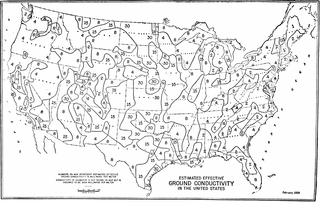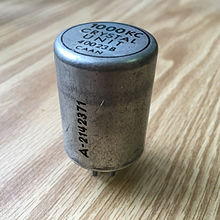
Frequency, most often measured in hertz, is the number of occurrences of a repeating event per unit of time. It is also occasionally referred to as temporal frequency for clarity and to distinguish it from spatial frequency. Ordinary frequency is related to angular frequency by a factor of 2π. The period is the interval of time between events, so the period is the reciprocal of the frequency: f = 1/T.

The fundamental frequency, often referred to simply as the fundamental, is defined as the lowest frequency of a periodic waveform. In music, the fundamental is the musical pitch of a note that is perceived as the lowest partial present. In terms of a superposition of sinusoids, the fundamental frequency is the lowest frequency sinusoidal in the sum of harmonically related frequencies, or the frequency of the difference between adjacent frequencies. In some contexts, the fundamental is usually abbreviated as f0, indicating the lowest frequency counting from zero. In other contexts, it is more common to abbreviate it as f1, the first harmonic.

The hertz is the unit of frequency in the International System of Units (SI), equivalent to one event per second. The hertz is an SI derived unit whose expression in terms of SI base units is s−1, meaning that one hertz is the reciprocal of one second. It is named after Heinrich Rudolf Hertz (1857–1894), the first person to provide conclusive proof of the existence of electromagnetic waves. Hertz are commonly expressed in multiples: kilohertz (kHz), megahertz (MHz), gigahertz (GHz), terahertz (THz).
A microsecond is a unit of time in the International System of Units (SI) equal to one millionth of a second. Its symbol is μs, sometimes simplified to us when Unicode is not available.

In communications and electronic engineering, an intermediate frequency (IF) is a frequency to which a carrier wave is shifted as an intermediate step in transmission or reception. The intermediate frequency is created by mixing the carrier signal with a local oscillator signal in a process called heterodyning, resulting in a signal at the difference or beat frequency. Intermediate frequencies are used in superheterodyne radio receivers, in which an incoming signal is shifted to an IF for amplification before final detection is done.

Radio waves are a type of electromagnetic radiation with the longest wavelengths in the electromagnetic spectrum, typically with frequencies of 300 gigahertz (GHz) and below. At 300 GHz, the corresponding wavelength is 1mm, which is shorter than the diameter of a grain of rice. At 30 Hz the corresponding wavelength is ~10,000 kilometers, which is longer than the radius of the Earth. Wavelength of a radio wave is inversely proportional to its frequency, because its velocity is constant. Like all electromagnetic waves, radio waves in a vacuum travel at the speed of light, and in the Earth's atmosphere at a slightly slower speed. Radio waves are generated by charged particles undergoing acceleration, such as time-varying electric currents. Naturally occurring radio waves are emitted by lightning and astronomical objects, and are part of the blackbody radiation emitted by all warm objects.

The becquerel is the unit of radioactivity in the International System of Units (SI). One becquerel is defined as the activity of a quantity of radioactive material in which one nucleus decays per second. For applications relating to human health this is a small quantity, and SI multiples of the unit are commonly used.
The jansky is a non-SI unit of spectral flux density, or spectral irradiance, used especially in radio astronomy. It is equivalent to 10−26 watts per square metre per hertz.

In signal processing, sampling is the reduction of a continuous-time signal to a discrete-time signal. A common example is the conversion of a sound wave to a sequence of "samples". A sample is a value of the signal at a point in time and/or space; this definition differs from the term's usage in statistics, which refers to a set of such values.
In computing, the clock rate or clock speed typically refers to the frequency at which the clock generator of a processor can generate pulses, which are used to synchronize the operations of its components, and is used as an indicator of the processor's speed. It is measured in the SI unit of frequency hertz (Hz).

Rotational frequency, also known as rotational speed or rate of rotation, is the frequency of rotation of an object around an axis. Its SI unit is the reciprocal seconds (s−1); other common units of measurement include the hertz (Hz), cycles per second (cps), and revolutions per minute (rpm).
From early in the 20th century, the radio frequency of 500 kilohertz (500 kHz) was an international calling and distress frequency for Morse code maritime communication. For much of its early history, this frequency was referred to by its equivalent wavelength, 600 meters, or, using the earlier frequency unit name, 500 kilocycles or 500 kc.

Revolutions per minute is a unit of rotational speed for rotating machines. One revolution per minute is equivalent to 1/60 hertz.

The Ground Wave Emergency Network (GWEN) was a US Air Force command and control communications system, deployed briefly between 1992 and 1994, intended for use by the United States government to facilitate military communications before, during and after a nuclear war. Specifically, the GWEN network was intended to survive the effects of an electromagnetic pulse from a high-altitude nuclear explosion and ensure that the United States President or their survivors could issue a launch order to Strategic Air Command bombers by radio.
Spectral efficiency, spectrum efficiency or bandwidth efficiency refers to the information rate that can be transmitted over a given bandwidth in a specific communication system. It is a measure of how efficiently a limited frequency spectrum is utilized by the physical layer protocol, and sometimes by the medium access control.
In computer architecture, cycles per instruction is one aspect of a processor's performance: the average number of clock cycles per instruction for a program or program fragment. It is the multiplicative inverse of instructions per cycle.

The radian per second is the unit of angular velocity in the International System of Units (SI). The radian per second is also the SI unit of angular frequency. The radian per second is defined as the angular frequency that results in the angular displacement increasing by one radian every second.

Ground conductivity refers to the electrical conductivity of the subsurface of the earth. In the International System of Units (SI) it is measured in millisiemens per meter (mS/m).
The inverse second or reciprocal second (s−1), also called per second, is a unit defined as the multiplicative inverse of the second. It is applicable for physical quantities of dimension reciprocal time, such as frequency and strain rate.
Pulsed radiofrequency is the technique whereby radio frequency (RF) oscillations are gated at a rate of pulses (cycles) per second (one cycle per second is known as a hertz (Hz)). Radio frequency energies occupy 1.0×104 Hz to 3.0×1011 Hz of the electromagnetic spectrum. Radio frequency electromagnetic energy is routinely produced by RF electrical circuits connected to a transducer, usually an antenna.












